how many times I see a purpose-built home theatre with only a 70-80" screen.
Elements of a Home Theater: All the Pieces You’ll Need to Bring it Together
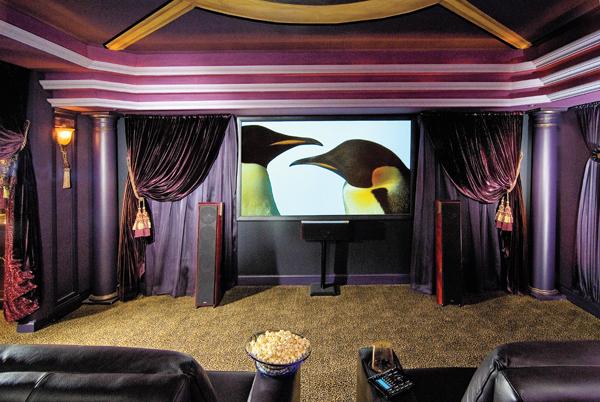
1. HD Display
These days, your HD display will be a flat-panel HDTV or a front projector. Some home theaters have both—an LCD or plasma for day-to-day viewing and a projector with a drop-down screen that springs into action for an ultra-big-screen experience on movie nights. A flat panel will obviously be mounted at the front of the room. But a projector needs distance from its separately mounted screen and can be ceiling- or shelf-mounted
in the middle or back of the room, or hidden in a floor console by the viewing area. The exact distance from the screen will depend on the projector specification and the screen size.
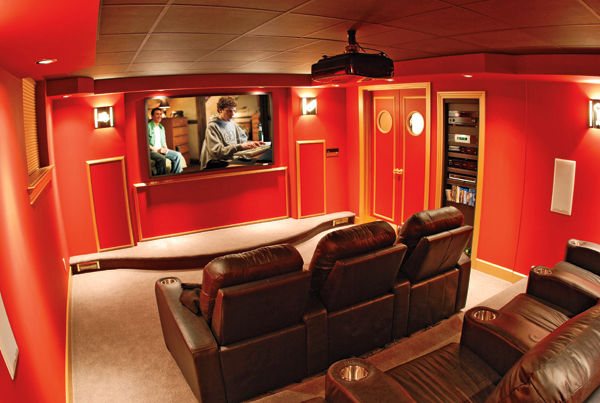
2. Projection Screen
Projection screens come in several types. There are retractable screens that drop down from a ceiling and even some that come up from the floor. Fixed screens may be tacked to a wall or supported by a stand. Screens vary in their reflectivity and other characteristics and should be carefully matched to the installation based on the projector’s brightness with 2D and 3D content, the amount of ambient light anticipated during viewing (hopefully little or none), and personal taste. Some screens are acoustically transparent like those in movie theaters, with tiny perforations that allow the sound from speakers mounted behind the screen to pass to the seating area.
3. Component Rack
Every home theater room has an established location where equipment other than the projector and speakers lives. It may be a closet or an exposed shelf. It can be a regular audio rack or a professional-style A/V rack designed to accommodate cooling of your gear with convection or fan cooling. All cables in your theater will usually home-run back to the rack.
4. Source Components
The highest-quality video source for any home theater today is a Blu-ray player. You’ll also have a cable or satellite box and possibly a separate set-top streaming media receiver to stream content from Netflix, Vudu, Pandora, or other services if these are not available
through your Blu-ray player or another component. If you’re also using the system for high-performance music playback, you may have additional audio components such as a dedicated CD player or turntable.
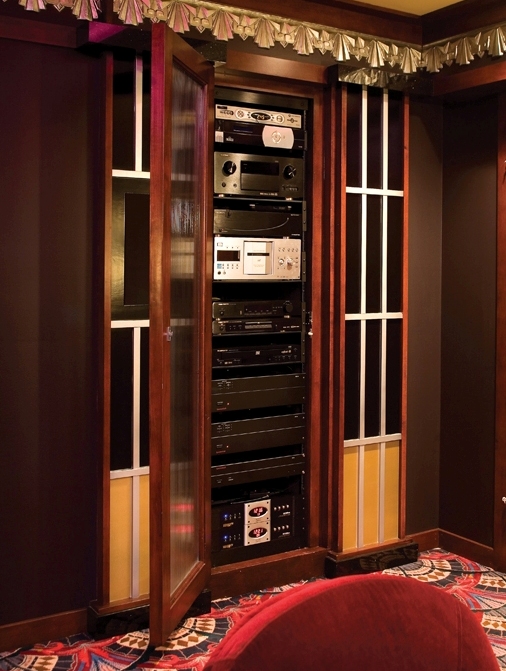
5. A/V Receiver or Separates
Digital audio soundtracks from your source components must be decoded and amplified for playback through the speakers. A/V receivers provide these functions, along with easy
switching among your sources. High-performance installations sometimes include a separate surround processor and power amplifier, which together perform these same functions.
6. Front Left/Right Speakers
The primary left/right speaker pair is a holdover from the early days of stereo. During playback of movie soundtracks, you’ll find these called upon to reproduce background music and special effects; dialogue is handled by the center channel. For two-channel music listening, they function in their traditional role. The front left/right speaker pair is typically positioned to the left and right of the screen but may be placed behind an acoustically transparent screen in some installs.
7. Center-Channel Speaker
In most film and TV soundtracks as well as many multichannel music discs, dialogue and primary vocals are restricted to the center channel speaker. Its purpose is to lock dialogue firmly to the screen for all listeners in all positions. It’s positioned below or above the screen or behind an acoustically transparent screen.
8. Surround Speakers
These reproduce backfield surround effects in movie and broadcast soundtracks. The surrounds are typically positioned on the side walls just behind the primary seating
area and above listener ear level, most commonly about 6 feet off the floor. Alternately, they can be placed on the back wall if the room layout demands.
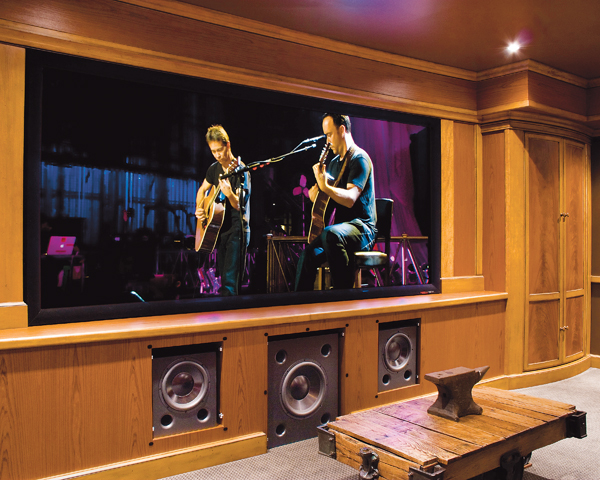
9. Subwoofer
The “point one” in a 5.1-channel system, the subwoofer is a dedicated speaker that supplements music and surround effects with deep bass energy. A subwoofer can be placed almost anywhere in the room, but up front is usually best; some theaters use multiple subwoofers to help even out the bass response.
10. Back Surround Speakers
Better A/V receivers typically have seven amplifiers on board. These are available
to drive two extra channels, which are discretely encoded on some soundtracks but
more often just derived from existing information in a 5.1-channel mix. While back surrounds can enhance the surround experience and may be beneficial in extending the surround field in deep rooms with multiple rows of seating, our view remains that they aren’t required for a satisfying home theater experience.
11. Front Height/Width Speakers
Along with facilities for back surround speakers, some modern AV receivers provide up to nine channels of amplification or the line-level outputs required to drive extra speaker pairs that would be placed up front on the wall above the primary left/right speakers, or to the far left and right of the primary speakers, with the intent of expanding the height and/or width of the front soundstage. Few if any soundtracks are mixed to take full advantage of these, and as with back surrounds, they’re not required.
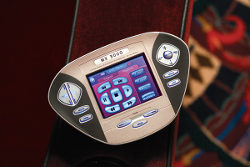 12. Remote Control
12. Remote Control
The best way to operate a home theater system is with an activity-based universal remote control that replaces the four or five remotes supplied with your components with a single wand or tablet labeled with one-touch buttons to “Watch a Movie” or “Watch TV.” An RF (radio frequency) model may be required to communicate with equipment hidden in a closet or in a rack behind the seating area and is generally desirable for more reliable operation.
13. Lighting
Home theaters and media rooms benefit from careful placement of lighting both to create mood and to ensure a good viewing environment. Dedicated theater rooms with front projectors generally require total darkness for the best viewing experience. They also require lighting for entry and egress that is ideally controllable from the viewing seats via remote control or other means; dimmable sconces are popular. Multipurpose rooms with a flat panel may require overhead lighting when you’re watching day to day, but spots and recessed cans should be dimmable and placed where they won’t directly wash out the screen.
14. Acoustic Treatments
The need for acoustic treatments varies from room to room, but almost all rooms benefit from wall or ceiling treatments and furnishings that help control reflections.
15. Seating
Theater seating can be anything from a cozy couch to several dedicated home theater seats that offer cup holders or reclining features. Viewing comfort and design considerations are the only overriding concerns.
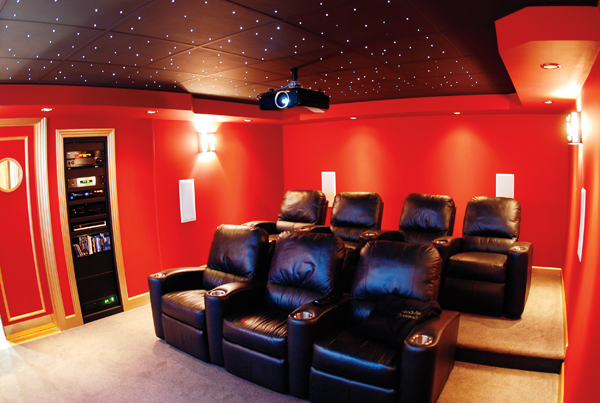
- Log in or register to post comments


How many times I see a fully trimmed home theater, with wonderful decor, RUINED by speakers with the factory white grilles! (the red themed theater pictured here is an offender) PAINT YOUR GRILLES TO MATCH THE WALLS, PEOPLE!

I agree about the screen size, but sometimes there's a method to the madness. An audiophile buddy of mine has a setup that blows my mind: JVC top-of-the-line Projector, Lamm monoblocks, Revel Ultimas, twin Flagship Velodynes, Wadia front-end, and so on....all in a dedicated room acoustically engineered by Rives Audio. But his (auto masking) screen is under 90" and frankly looks tiny sitting over all his gear. I asked him about it and he's such an audiophile that he chose the screen size based on how far apart his speakers sat. He didn't want an AT screen affecting the audio, and he didn't want to move his speakers out of their perfect sweet spot. So he got the largest size possible that fit between his speakers. I thought it a crazy idea, but I have to admit it sounds pretty damn amazing in there.

A true audiophile wouldn't actually sacrifice anything that is related to audio. So, I applaud to the method of his madness. =)

Home Theater is just an amazing element of interior designing par these days. Music is just love for billions of people and I am one of them. Love to have top quality sound. :)
http://www.homedecorbuzz.com/
























































